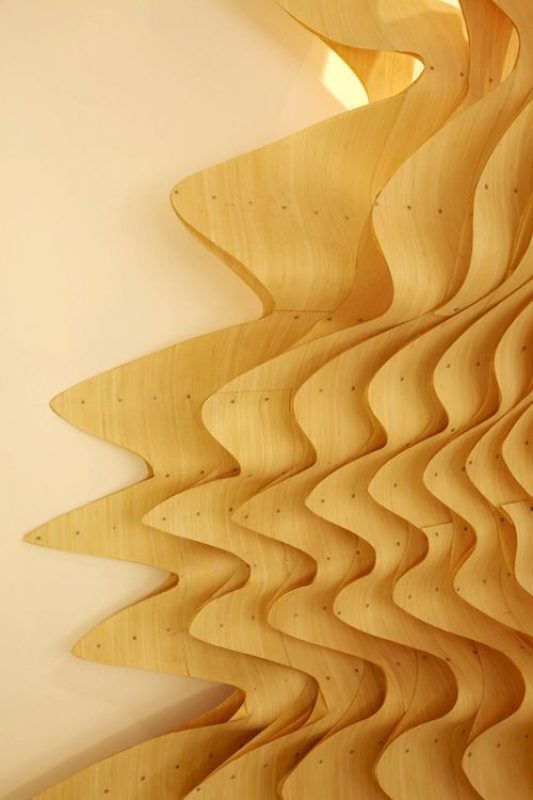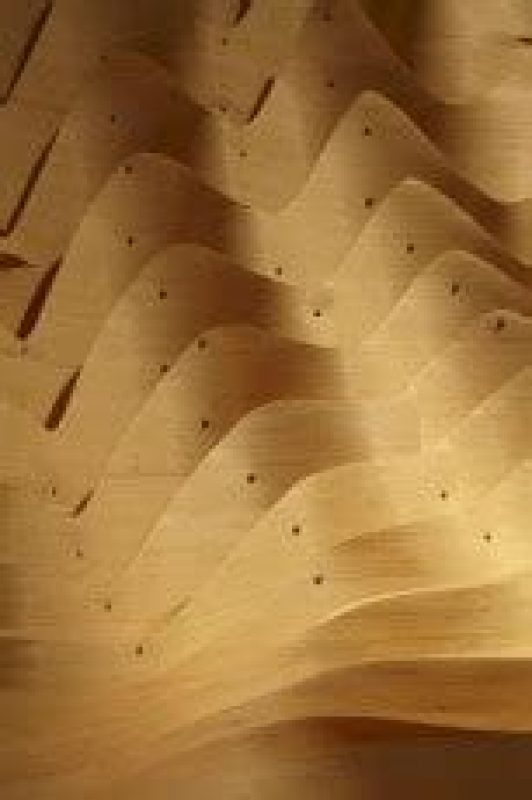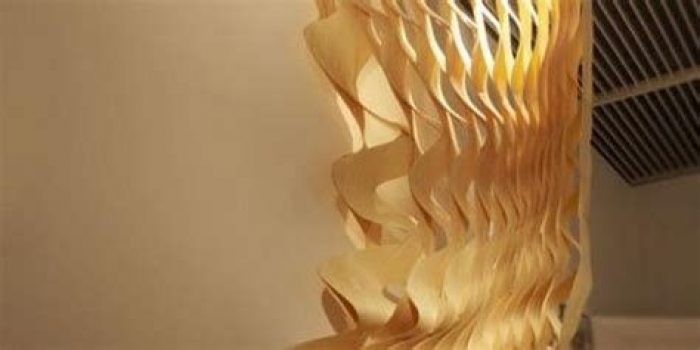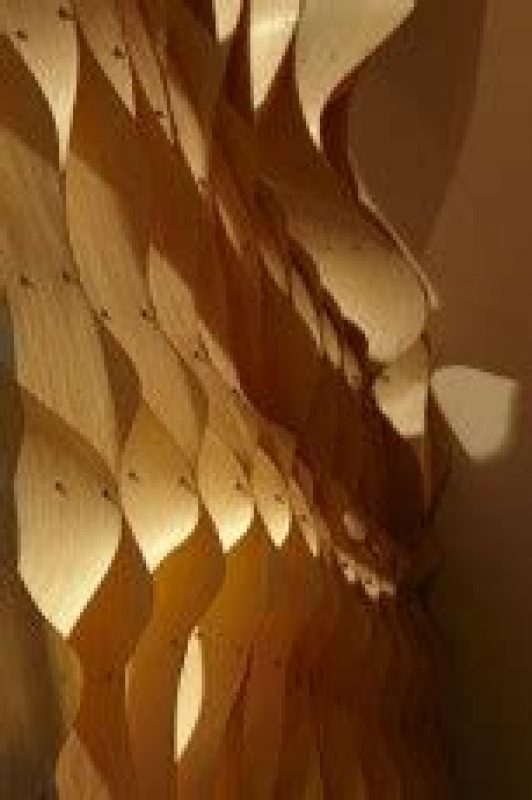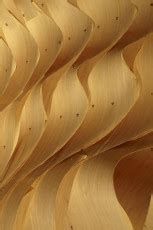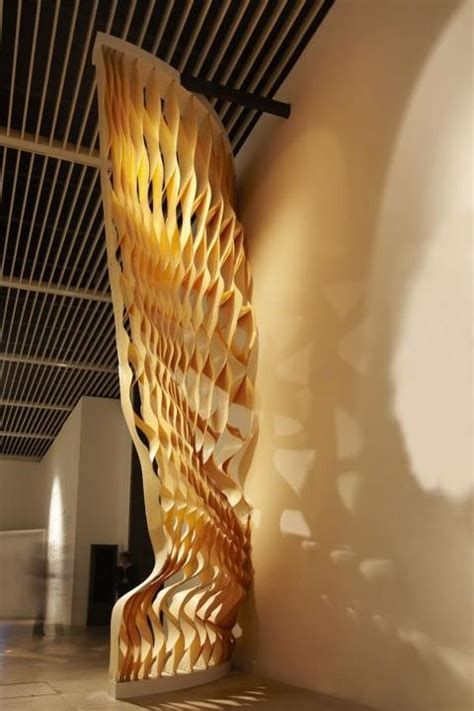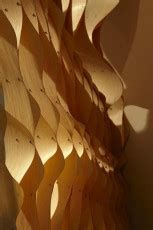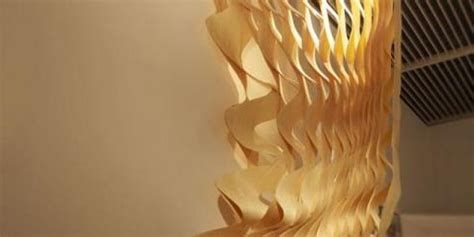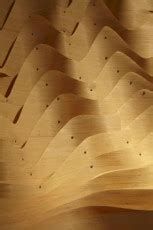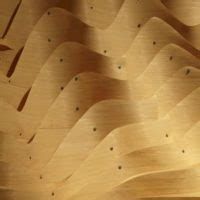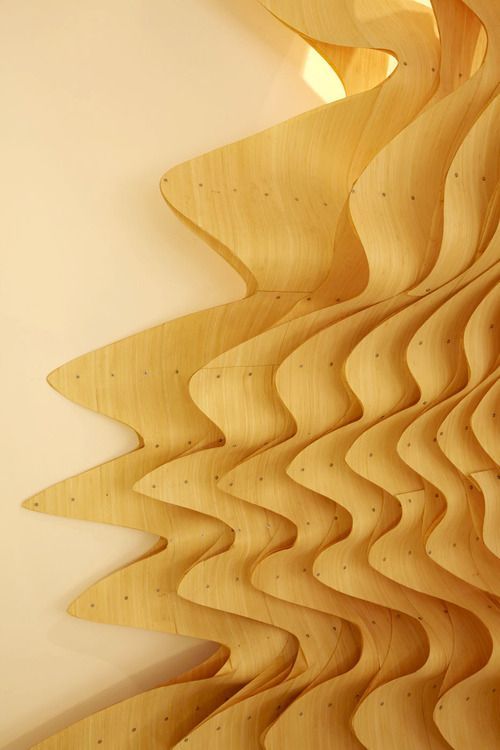Anisotropia is based on Klavierstück I, a composition for piano by Orproject director Christoph Klemmt. The piano piece uses a twelve tone row which is repeated and altered by the different voices, in order to create complex rhythmic patterns. Anisotropia becomes the physical manifestation of Klavierstück I, a frozen piece of music.
The installation is based on a simple strip morphology instead of a twelve tone row, which creates the structure, openings and rhythm within itself, its repetition happening in space instead of time. Layers of the strips form the wall system, and the shifting and alteration of these patterns results in the formation of complex architectural rhythms which are used to control the light, view and shading properties of the structure. The system has also been used for our design proposal for Busan Opera House.
SHIFTING TONES:
Klavierstück I uses a twelve tone row which starts with the lowest key of the piano. After its first cycle the row gets repeated, though shifted up by a halftone. However rather than translating up every tone by a halftone, only the lowest tone of the row is translated up by one octave. Like this the row remains the same, but its range has been shifted.
In the next repetition this shift continues, but the range now also gets reduced in its size: The lowest tone gets translated up by one octave again, and the second lowest tone gets dropped out, so that only the remaining eleven tones of the row are played. Instead of the twelve tones the range now only covers eleven tones, and also its length is reduced accordingly.
The range of the twelve tone row continues to be reduced and shifted upwards until only one tone is left in each repetition of the original row. Then the range grows again, and still moving upwards goes through further modulations: The different voices of the piece are starting to separate, the size of the different parallel ranges starts to diverge, they move around each other, until finally they grow together again, still moving up and their range fading out with the highest key of the piano.
Piano Piece No.1 is based on a simple row of the twelve tones, but by shifting and translating its range of influence, complex and continuously evolving rhythmic patterns are generated and turned into a floating field of sound.
STRUCTURE AND LIGHT:
The proposed façade system becomes the physical manifestation of Klavierstück I. It uses parallel bamboo lamella which are creating the rhythmic structure. The basic unit of two strips is creating form into two dimensions, and becomes a straight extrusion into the third dimension. Like this it gets multiplied into the first two dimensions, where it develops and gets modified in the same way in which the twelve tone row gets repeated and modified in time.
The extrusion in the third dimensions allows for a horizontal modification during the development of the wall, which is used in a linear direction similar to the continuous upwards movement of the piano piece. In the piano piece always only the upper few tones of each twelve tone row are audible and create the floating field of rhythmic transformations. Similarly in the installation, only the peaks of each strip become visible and create a floating field of structure, shadow and light.
Courtesy Of Xin Wang and Christoph Klemmt
Courtesy Of Xin Wang and Christoph Klemmt
Courtesy Of Xin Wang and Christoph Klemmt
Courtesy Of Xin Wang and Christoph Klemmt
Courtesy Of Xin Wang and Christoph Klemmt
Courtesy Of Xin Wang and Christoph Klemmt
Courtesy Of Xin Wang and Christoph Klemmt


